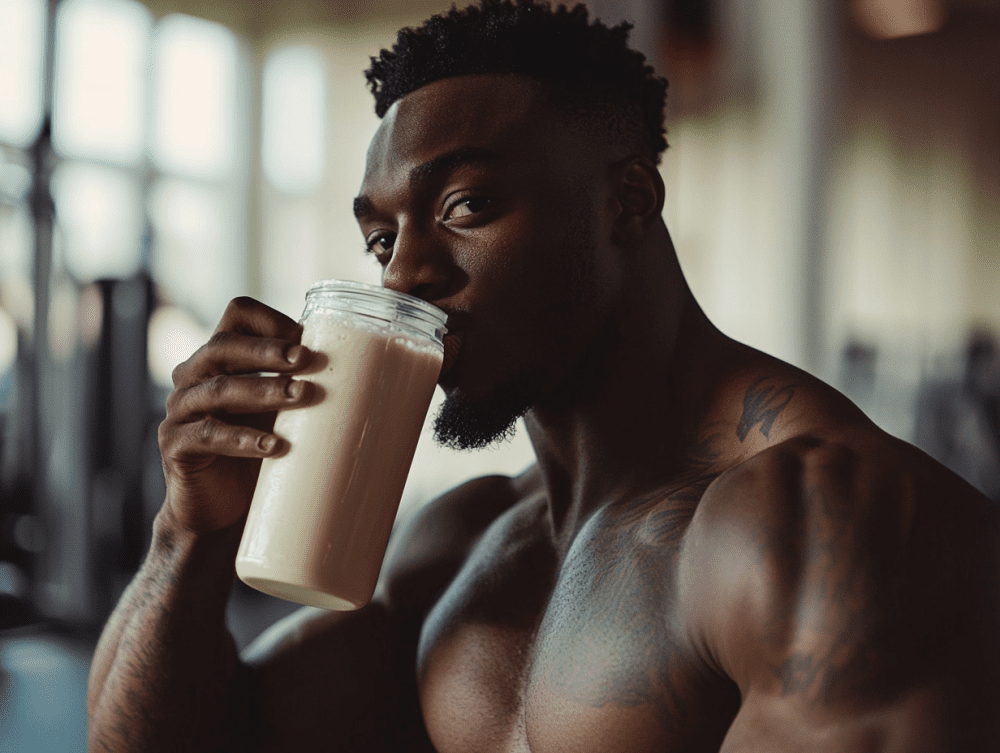In the ever-evolving world of fitness and bodybuilding, two terms have become ubiquitous: bulking and cutting. These methodologies, once the sole domain of professional bodybuilders, have permeated the broader fitness community, captivating enthusiasts from all walks of life. But what lies beneath these buzzwords, and how can the average gym-goer harness their potential? This comprehensive guide delves into the intricacies of bulking and cutting, offering insights for both seasoned athletes and fitness neophytes alike.
Decoding the bulk and cut paradigm
At its core, the bulk and cut cycle represents a strategic approach to body composition manipulation. Bulking involves intentionally consuming a surplus of calories to facilitate muscle growth, while cutting focuses on reducing body fat while preserving hard-earned muscle mass. This cyclical approach has long been a staple in the bodybuilding community, but its principles can be adapted to suit a variety of fitness goals.
The universal appeal of strategic body composition
While the image of a bodybuilder might spring to mind when discussing bulking and cutting, these methodologies have far-reaching applications. Athletes across various disciplines have found value in these techniques. Rugby players and football linemen might engage in bulking phases to increase their size and strength, crucial for their on-field performance. Conversely, runners and rock climbers might implement cutting strategies to improve their power-to-weight ratio, enhancing agility and endurance.
Unveiling the bulking process
Bulking is more than simply eating with abandon. It’s a calculated approach to muscle hypertrophy that requires careful planning and execution. During a bulk, individuals deliberately consume more calories than they burn, typically ranging from 200 to 500 extra calories per day. This caloric surplus, combined with a rigorous strength training regimen, creates an optimal environment for muscle growth.
The bulking phase is characterized by:
- Increased caloric intake
- Higher protein consumption
- Progressive overload in strength training
- Potential for both muscle and fat gain
The double-edged sword of bulking
Like any fitness strategy, bulking comes with its own set of advantages and potential drawbacks.
Advantages:
- Significant muscle growth
- Increased strength and power
- Enhanced performance in strength-based sports
- Improved bone density
- Elevated energy levels
Potential drawbacks:
- Necessity for meticulous food tracking
- Possible increase in body fat
- Potential decrease in agility
- Risk of negative health markers if not properly managed
Mastering the art of the bulk
To maximize the benefits of a bulking phase while minimizing potential drawbacks, consider the following strategies:
- Caloric precision: Ensure a consistent caloric surplus without going overboard. Aim for a 10-20% increase above maintenance calories.
- Protein prioritization: Consume at least 1 gram of protein per pound of body weight to support muscle synthesis and repair.
- Progressive resistance: Continually challenge your muscles by incrementally increasing weights and varying exercises in your strength training routine.
- Regular progress assessments: Monitor weight, body measurements, and strength levels to make informed adjustments to your program.
- Professional guidance: Consider enlisting the help of a certified strength and conditioning coach for personalized advice and programming.
Demystifying the cutting phase
Cutting is the counterpart to bulking, focusing on fat loss while preserving muscle mass. This phase is characterized by a caloric deficit, typically achieved by consuming 10% to 20% fewer calories than required for maintenance. The goal is to reveal the muscle definition gained during the bulking phase, resulting in a leaner, more chiseled physique.
Key aspects of the cutting phase include:
- Caloric restriction
- Macronutrient manipulation
- Increased cardiovascular activity
- Maintenance of strength training volume
The pros and cons of cutting
Like bulking, cutting comes with its own set of benefits and challenges.
Benefits:
- Reduction in body fat percentage
- Enhanced muscle definition
- Improved athletic performance in weight-class sports
- Potential health benefits associated with lower body fat
Challenges:
- Requires strict adherence to nutritional plans
- Can lead to fatigue and increased hunger
- May impact recovery and mood
- Risk of muscle loss if not properly executed
Navigating the cutting phase successfully
To optimize your cutting phase, consider implementing these strategies:
- Gradual calorie reduction: Start with a modest caloric deficit and adjust as needed to ensure steady, sustainable fat loss.
- Macronutrient balance: Prioritize protein intake to preserve muscle mass, while strategically reducing fats and carbohydrates.
- Nutrient timing: Consider concentrating carbohydrate intake around workouts to fuel performance and recovery.
- Implement resistance training: Maintain a challenging strength training routine to signal the body to preserve muscle mass.
- Increase non-exercise activity thermogenesis (NEAT): Incorporate more daily movement to support fat loss without excessive cardio.
The importance of individualization
While the principles of bulking and cutting are widely applicable, it’s crucial to recognize that there’s no one-size-fits-all approach. Factors such as age, gender, genetics, and individual goals all play a role in determining the most effective strategy. What works for a competitive bodybuilder may not be appropriate for a recreational fitness enthusiast or an endurance athlete.
Striking a balance: The key to sustainable progress
For many individuals, the extreme nature of traditional bulking and cutting cycles may not be necessary or sustainable. A more moderate approach, often referred to as “body recomposition,” involves making simultaneous, gradual changes in body composition over time. This method may be more suitable for those looking to improve their physique without the drastic swings associated with aggressive bulking and cutting.
The role of professional guidance
Given the complexities involved in manipulating body composition, seeking professional guidance can be invaluable. Registered dietitians, certified strength and conditioning specialists, and experienced fitness coaches can provide personalized advice tailored to individual needs and goals. These professionals can help navigate the nuances of nutrition, training, and recovery, ensuring a safe and effective approach to physique enhancement.
Embracing a holistic approach to fitness
While bulking and cutting can be powerful tools in the fitness arsenal, it’s essential to view them as part of a broader, holistic approach to health and wellness. Factors such as sleep quality, stress management, and overall lifestyle habits play crucial roles in achieving and maintaining desired body composition.
In conclusion, the concepts of bulking and cutting offer intriguing possibilities for those looking to transform their physiques. However, these strategies should be approached with caution, knowledge, and preferably under professional guidance. By understanding the principles behind these methodologies and adapting them to individual circumstances, fitness enthusiasts can work towards their goals in a safe, effective, and sustainable manner. Remember, the journey to improved fitness and body composition is a marathon, not a sprint, and the most successful transformations are those that prioritize long-term health and well-being over quick fixes or extreme measures.














